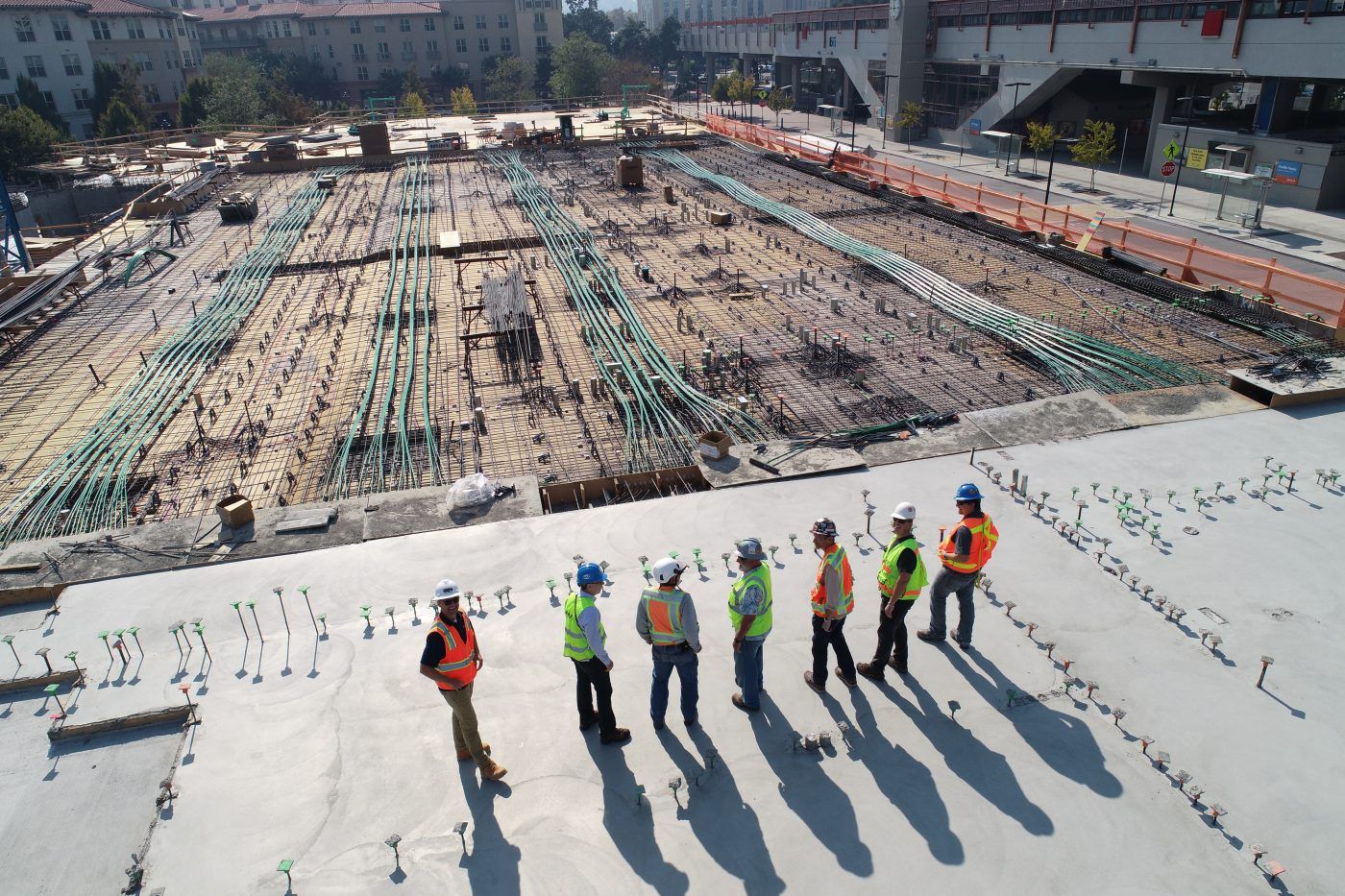Throughout the decades many construction and home improvements companies have relied on tactics such as word of mouth, their connections, or traditional marketing techniques to drum up leads.
However, while traditional methods are still very important, more and more consumers (and yes, even B2B buyers) are now turning to search engines such as Google to find better deals and a wider range of products. According to one study, 85% of B2B buyers now prefer using self-service tools for ordering over talking to a sales rep.
Over the last decade I’ve seen not just PR tactics change – but also the objectives of PR for many construction businesses. With digital having now changed the buying landscape, more and more construction companies are using PR in conjunction with SEO to secure organic real estate in search engines and drive more leads for their business.
In this guide on doing PR for businesses in the construction and home improvements, I will cover why PR is valuable for construction businesses and provide some tips and advice on how you can pitch to the media and secure quality coverage for your construction business.
Why Should Construction Businesses do PR?
When people think of PR, many still conjure up images of press clippings in trade magazines that feature their business or products.
While that certainly still has its place, the last couple of decades has tipped PR on its head as online readerships rise and more businesses look to gain exposure in search engines.
However, good PR now arguably has more commercial value for construction businesses than it did in the past as it plays an important role in driving traffic to your website and helping to determine how your website can appear in search listings. The benefits of PR for construction businesses include:
- Increased brand exposure to key audiences in online publications
- More opportunities for exposure due to fewer limits on editorial space
- Opportunity to increase the authority of your website (and therefore how it could rank) in search engines through links in articles
- Opportunity to receive direct referral traffic to content assets and your website via online articles and links
When publications with good quality websites link to your site in their article, those links will impact how Google and other search engines perceive the authority of your site.
These links are among the most influential SEO ranking factors that can help to influence where your content sits in search engines when users search for relevant keywords. The higher up you come, the more potential for traffic and leads. When readers of construction publications click on these links, they also come through to your website.
Setting PR Objectives for Construction Businesses

As the role of PR adapts, it is important that anyone looking to achieve media placements in construction first determine what it is they want to achieve.
That’s because PR encompasses many different tactics and potential media targets, some of which are better suited for different objectives. For example, if you want to strengthen the authority of your website then there are certain types of PR stories that are more likely to travel further and gain more backlinks. However, those types of stories can be different to PR stories which are designed to perfectly propel a particular set of brand messages or stories.
It may also be the case that media targets for backlinks look different to the media outlets that best reach your key audiences. For example, you may still want a backlink from a news outlet that your core audiences don’t read all that much if it helps bolster the authority of your website in search engines. Common PR goals for construction businesses include:
- Media placements in publications read by key audiences (e.g. Constriction News or Construction Enquirer News)
- Number of brand mentions or even brand messages featured in relevant articles
- The number, quality and topical relevance (more on that later) of backlinks (that support SEO) pointing to your website
- Referral traffic to your website and content from links in news articles
While it is certainly possible to achieve all those objectives with one campaign, a strategy that drives the best results often has a multi-pronged approach with stories that appeal to brand objectives as well as search-related goals. That is why it is important to clarify what you want PR to achieve for you most before deciding on the best PR strategies to use.
5 of the Best PR Strategies for Construction Businesses

Once you’ve clarified what you want your PR to achieve for your construction business, the next step is to decide how you want to achieve it. There are many different tactics that you can use, however I’ve summarised just five that we have found to be most effective below.
1) News jacking / news jumping
In a nutshell, this is a fancy way of saying PR that is timely and very reactive to the news agenda. The more relevant your PR story is to what is happening in the news right now, the more likely it is to gain media attention.
Often this is done by pitching a comment from a spokesperson in your business to the media in response to something big that’s just happened. Journalists that write stories and features in response to big news events and will often include relevant commentary from industry experts where they can.
For example, you could comment on the release of a significant new report or data on construction site safety, a new government policy on VAT for construction businesses or something much broader on the news agenda, such as the current cost of living crisis (at the time of writing this article).
You can also respond to news events with larger PR campaigns and stories, but the key thing is to do it quickly – ideally within hours, and certainly within 48 hours if possible. We live in a rolling 24 hour media culture, and the more timely the story is, the more likely it is to be relevant now and therefore get more coverage and links.
When considering what to react to, you’ll of course want to think about your PR messaging objectives. However, if you want to get the attention of journalists you’ll also need to say something in a comment that adds something different to the conversation and makes a useful and valuable contribution to the issue at hand. This is particularly true of big events (such as the Spring Budget) when you’ll come up against stiff competition from other PRs who are pitching generic comments.
It is also good practice to consider your spokesperson carefully. Don’t just go for the Managing Director every time. Think about who in your organisation the media and their readers are most likely to see as an expert on that particular topic, as journalists are often more likely to include them.
2) News releases and company announcements
Press releases are one of the first things that people tend to think of when it comes to PR and for good reason – because they’re an effective way of getting your story out there.
However, before you put pen to paper, you first need to determine what is – and isn’t – a news story in the eyes of your target media. By talking to key stakeholders in your organisation, you’ll get a good idea of what’s happening at your company. My advice is to list these new developments out and consider which have the most news potential.
If you’re unsure, compare it to the news articles you see in your target media. Could you imagine the launch of your new corporate brochure headlining on Construction News, for example? (Spoiler alert – that’s not likely to happen!). If you don’t have any news that people would want to hear, then you might want to think about creating some.
Another important point to consider here is how you structure your press release before you send it to the media. Some journalists can get hundreds of press releases a day. In between those pitches and their deadlines and meetings, your story needs to stand out as something that their audience would want to read and is worth them investing their (often limited) time in. So really draw out why a story is newsworthy as early on in the release as possible.
You may want to read a guide on how to write a press release if you’re not experienced in this area. However, the most important thing is usually to draw out the most newsworthy part of your story in the headline and first paragraph.
It is not uncommon (particularly in larger organisations) for many stakeholders to review press releases before they get the go ahead to go to the media, so ensure that you are all on the same page in terms of the objective here. Getting the brand messaging down is important, but avoid letting that overpower the editorial strength of the story if you want it to achieve media coverage.
If you have the freedom and time to do so, creating different versions of press releases that are better targeted for key media titles can also increase the likelihood that they will find it relevant.
3) ‘Creating’ news you can use
Some construction companies are full to the brim with new and newsworthy developments, particularly industry leaders, industry disruptors and new innovators. However, construction businesses don’t need to miss out on PR if they don’t have a consistent flow of news stories. That’s because you can create news stories.
There are many ways that you can do this, from partnerships with third parties and setting up events to rolling out a PR stunt. However, creating news doesn’t always have to cost you.
One great way of creating news stories is by using data to showcase construction industry trends about issues which relate to your brand. From the Office of National Statistics, the Health & Safety Executive and Statista to Google search data and social data – the internet is awash with great (and often unexplored) media databases.
By looking through these datasets, you can often find trends around relevant industry topics that haven’t yet been published in the media. Add valuable expert comment from your industry experts that reflect on newsworthy trends in the form of a press release, and you’ll have an effective PR story that you can use to secure media pick up. For more advice and tips on how to do this, read our blog on 9 ways to get data for authoritative links.
4) Thought leadership article pitching
Another great way of securing coverage and positioning your brand to key construction audiences is by pitching for thought leadership articles, opinion pieces and interview articles.
Many construction trade magazines in particular (both online and in print) contain sections for interviews with industry leaders or opportunities for industry players to pen an article that comments on topical industry issues.
To do this effectively, you’ll want to include the below in your pitch:
- The issue(s) you want to comment on and why it is relevant for the audience of the construction media outlet you are approaching. You’ll need to mention the specific angle related to that issue and why it is new, different and interesting.
- Your spokesperson (or people) in your business including information on why they are experts and the best person to comment on that particular topic.
- Clarity on how you are suggesting they be featured. Take a look at their website to see whether they usually run interviews, opinion pieces or another type of article and let them know how it could fit in with their outlet.
When deciding on the topics to pitch, you will of course want to settle on something that’s relevant to your business. However, for your pitching to be effective it will also need to be something that’s relevant to the news agenda and for the best chance of securing opportunities you will want to present a compelling new angle on that topic. It’s very rare that quality publications will allow a whole feature focused soley on your product or business unless they happen to have a series dedicated to this.
5) ‘Mini’ PR Stunts
PR stunts can be great for widespread exposure and to help drive more coverage and backlinks. However, they often need some pretty creative thinking as well as significant planning and investment.
When people think of PR stunts, they often talk about something like a flash mob in London Victoria station or a floating installation on the River Thames. However, these are often every costly enterprises and many construction companies avoid them due to the risk and investment involved.
The rise of digital PR means that it’s possible to do PR stunts on a smaller scale to help drive more media pick up and showcase your construction brand in a creative light. Examples of this can include:
- Posting job listings for unusual ‘dream’ jobs
- Fake / unusual product and service launches
- April Fools campaigns
These types of campaigns can often be done almost entirely online with PR activity taking place around a dedicated landing page or blog.
Media Targeting For Construction PR

After you’ve identified your PR stories and created the relevant press materials, you will naturally want to identify who and where to pitch it to.
A great place to start is by using a subscription-based media database platform where it is often possible to find hundreds of contacts in the construction industry. Using these tools you can build media lists of relevant contacts and access contact details including email addresses and telephone numbers .
However, these platforms are often pricey, and if you’re just starting out, you may not have access or to or be able to afford a subscription. If this is the case, then you will need to invest some time into building media lists manually by researching contact details on their websites, social media channels and by contacting publications directly. Our digital PR training course contains more information and advice on how to do this.
Chances are, if part of your job role involves marketing your business then you will have at least some idea of which construction publications you’d like your business to be in. Common targets include general constriction news and magazine website such as Construction News, Construction Enquirer and Premier Construction News.
However, try to be open minded when creating media target lists. Remember to refer back to your media objectives here, as some media websites may be better targets for backlinks, while others may be a better fit for targeting key prospect customers.
It is also important to target the right people at these outlets rather than using standard ‘contact us’ email addresses. The best person to contact will vary depending on the publication and the type of PR story you are pitching, so you will need to use your detective skills and common sense here.
Measuring The Success of Your Construction PR Campaigns

When it comes to measuring the success of PR, we’ve come a long way since the days of reporting on readership figures and AVE (Advertising Value Equivalent).
When it comes to digital coverage, there are a number of different metrics that we can use to measure its value. However, it is always advisable to compare results against your objectives to ensure its adding value to your overall marketing objectives. While some campaigns will be great for media coverage, not all will be great for links, and visa versa. Common ways to measure the results of PR in construction include:
Backlinks & Domain Authority
As previously discussed, media coverage which includes backlinks to your website helps to strengthen the authority of your website in search engines, which can lead to increased traffic.
For this reason, it is common to evaluate success based on the total number of backlinks or referring domains (number of websites) achieved to your website. However, not all backlinks are created equal and quality matters just as much, if not more so, than quantity. Here are some good measures for assessing link quality:
Domain Authority
Tools such as Moz, Majestic SEO and Ahrefs hold metrics that indicate the authority of a website on a scale of 1 (very bad) to 100 (extremely good). These are third party tools, so take them with a pinch of salt. However, a link from a high Domain Authority site can be a good indication that it’s valuable for SEO. However, don’t read too much into small changes to your own website’s Domain Authority score as it takes time to change and these metrics offer an indication rather than an accurate measure at the microlevel.
Topical Relevance
By this, we mean how relevant in subject matter the linking site is to your own website. More and more evidence is emerging to show that backlink topical relevance is more important when it comes to backlinks than other factors such as the number of links. So, if you work for a construction business, then you will want to get links from construction focused websites (as opposed to say lifestyle websites) which are more relevant to your industry.
Website quality
This is a subjective measure, however it is an important one. A good rule of thumb is that if a website looks poor quality or ‘spammy’, then there is a good chance it is. Needless to say, spammy website don’t offer much in terms of link equity, and in rare cases can even be harmful to your website.
Organic Traffic & Search Positions
There are several ranking factors that can influence the average position of a web page in search engine results when a user puts in a search query. However, backlinks, alongside content and technical SEO factors, is one of the most influential. By increasing the number of links pointing to a page, it is possible to bump it up the search rankings, especially if the content on that page is also better or comparable to other websites that you are competing against.
While it is not possible to definitively attribute improvements in performance of a webpage to backlinks alone, it is possible to measure performance before and after PR that drives links to the page. If that page gets high quality links and then sees jump in its average ranking position, followed by an increase in traffic or leads, then it’s a solid indication of the PR’s commercial value.
Link Referral Traffic
Users reading the media coverage you secure will often click on the backlinks in the articles that point to your website. If you have Google Analytics set up properly you can often measure the quantity of this traffic and look at user journeys to distinguish any trends in their behaviour that lead to positive interactions or leads.
Social Shares
Good PR is also great for social, with many media organisations now posting any coverage to the followers on their social channels such as Twitter, LinkedIn, Facebook and Instagram. This can help to raise further awareness of your brand, website and social media channels. Using Google Analytics, you can often track the platforms from which users come into your website.
Key Publications
It may sound simple, but one important measure is to assess how many times your brand is featured in key news websites. If you have a good idea of the audience personas of a typical target customer for your construction business, then do your research on the audience profiles of key media titles. From this you will be able to define which titles reach your key audiences most effectively. You’ll then know exactly which outlets you want to be in when it comes to reaching key prospects.
Audience Metrics
Looking at traffic and audience metrics associated with the website that you achieved coverage in can also be useful. Often, you can find metrics such as Unique Users or Sessions on media database or in advertising rate cards. While these metrics don’t always tell you much about the quality of that audience or how many users interacted with the specific article in which you were featured, they can indicate the size of a website and its potential influence.
I hope you found this short guide on PR for construction businesses useful, and if you have any questions or you’d like to discuss PR services please do not hesitate to get in touch.


Leave a Reply